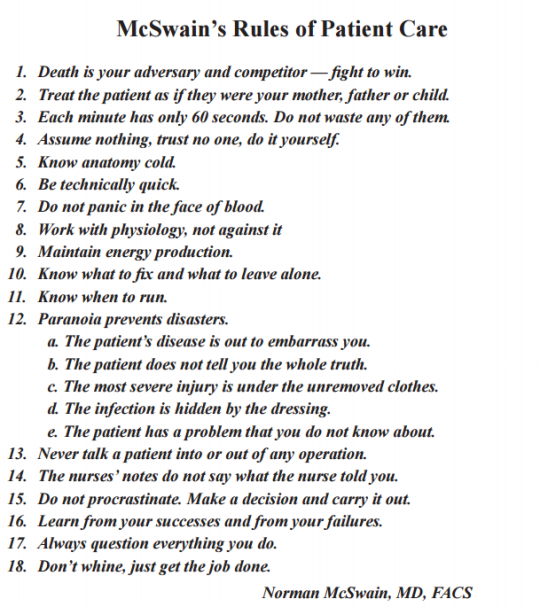Let’s get started with the Laws of Trauma!
After pursuing any discipline for an extended period, one begins to see the common threads and underlying principles of their area of expertise. I’ve been trying to crystallize these for years, and today I’m going to share one of the most basic laws of trauma care.
The First Law of Trauma
Any anomaly in your trauma patient is due to trauma, no matter how unlikely it may seem.
Some examples:
- An elderly patient who crashes his car and presents with arrhythmia and chest pain is not having a heart attack. Nor does he need a cardiologist or a trip to the cath lab. It is far more likely the crash is causing these problems rather than an MI causing a crash.
- A spot in the liver after blunt trauma is not a cyst or hemangioma; it is a laceration until proven otherwise.
- A patient found at the bottom of a flight of stairs with blood in their head did not have a stroke and then fall down.
- A patient who follows up in your trauma clinic with new complaints after a previous gunshot to the abdomen needs further clinical investigation, not just reassurance.
Bottom line: The possibility of trauma always comes first! It is your job to rule it out. Injury can and does kill people more quickly than an MI or a stroke, especially if it was never suspected.
Only consider non-traumatic problems as a last resort. Don’t let your non-trauma colleagues try to steer you down the wrong path only to have your patient suffer.

